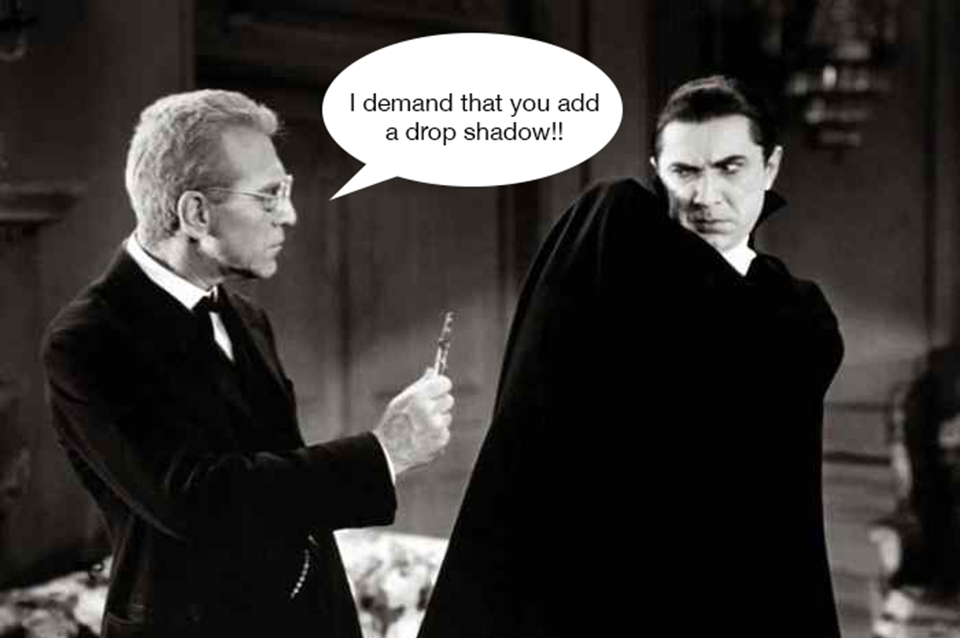I have been contemplating making the leap into higher ed. I love teaching and I find distinct pleasure in working with the young designers. The benefit of working and mentoring young designers is it requires that you know what you’re talking about. Having an open dialogue with some of my mentees about anything from the trajectory of our chosen profession to different program hacks that we’ve discovered to the ultra-nerdy discussions of our desires to work with certain papers is always enlightening. Sometimes I feel like a design vampire, sucking the creative youth out of them for my own selfish purposes.
All kidding aside, I believe it is imperative that mid-level and senior-level creative professionals give back. The best way to do so is to help up and coming designers any way we can. I am always willing to provide an impromptu critique on someone’s portfolio. I will direct people to potential job openings when they email me inquiring if I am hiring. I will gladly discuss various topics with young creatives at AIGA events.
All of this rambling is my set up for my design philosophy. As a working professional, having a design philosophy written down has never been a requirement. Recently, as part of several applications to colleges and universities looking for design professors, I have had to formalize the things I have always held to myself. The following is what I have come up with:
MY PERSONAL DESIGN PHILOSOPHY
Design is a communication process rooted in personal inquiry with the intent to transmit messages through visual form, interaction and sensory experience. While design has been utilized in many forms and for many functions, I believe that design should be used to promote social and environmental responsibility, and generate an awareness of topics that have previously gone unnoticed.
Designers must be citizens of the world and not be tied to the latest Communication Arts or HOW magazine for inspiration. They should look outside of themselves and their industry to other areas of study for research, knowledge and artistic endeavors as opposed to merely promoting product or limiting their frame of reference to design. The development of design should be shaped through a symbiotic relationship between critical thinking, keen observation and hands-on discovery to open our minds to new ideas and new ways of seeing.
While there is a trend for designers to start and keep everything within the digital realm, I believe the creative process should include a tactile experience that requires the designer to use more than what has been provided for and limited by a computer screen, program or website. We need designers who can think beyond the screen. Designers who—regardless of artistic talent—can ideate, develop and produce work that may not necessarily be tied to the digital realm, but can make an impact with anyone who views it.
For the past several years, I have taken a deep dive into understanding how to use design to effectively communicate to different demographic segments from Boomers, Millennials and Centennials to the ever-growing multi-cultural viewer. While I have discovered many similarities between these segments, there are also vast differences. Difference that must be addressed if, as designers, we hope to make a connection between our client’s and their customers.
Designers in every specialty must continually learn and increase their expertise. They must develop a love of learning and exploring. They must be able to conceptualize in mediums they may not have received training in. When a designer stops learning they risk becoming irrelevant. Designers of today and tomorrow are (and will be) multi-facited. They will be equally at home developing concepts for an out-of-home campaign as they are helping to produce a life-size experience.
My goal, as a design professional and mentor is to ensure that I motivate young designers to gain the skills they need in addition to acquiring a love of learning that will help them prepare for a rapidly evolving design landscape.
–––––––
So what’s the take away?
- Design can be used to promote social and environmental responsibility
- Designers should look outside of our profession for inspiration
- Design should be tactile as well as digital
- Designers should develop a love of learning
- Mentoring is our gift to the younger designers
’nuff said. #wepa

No comments.